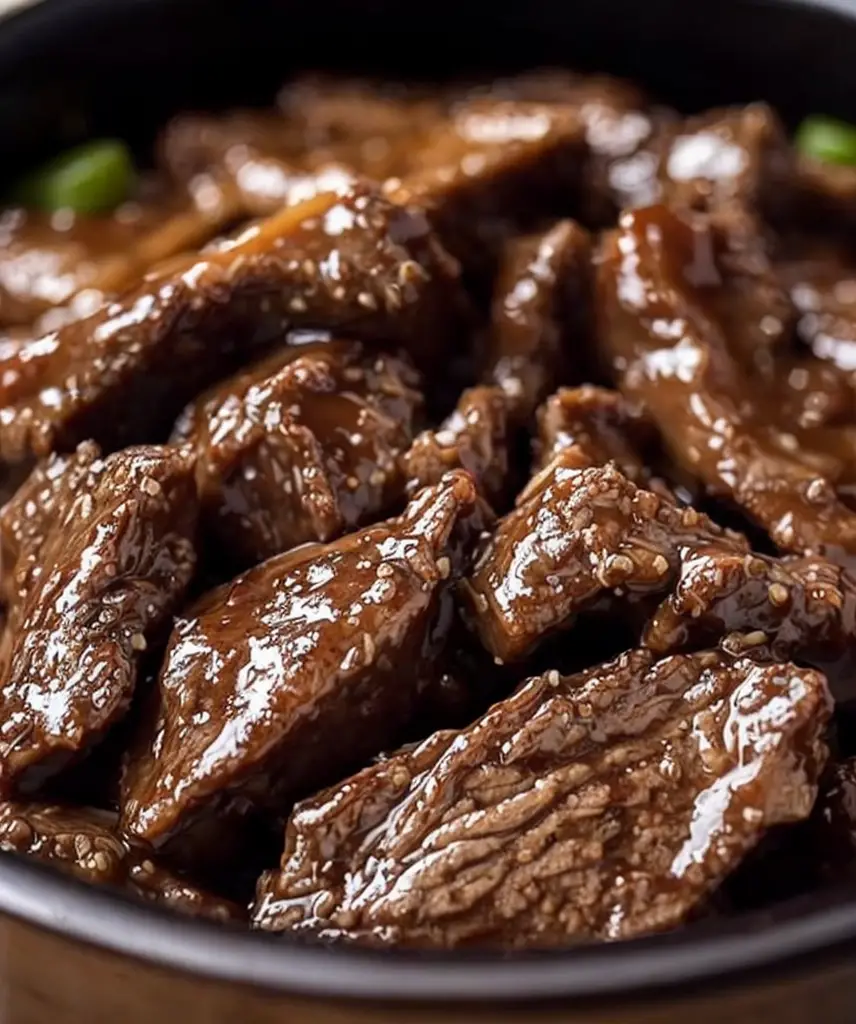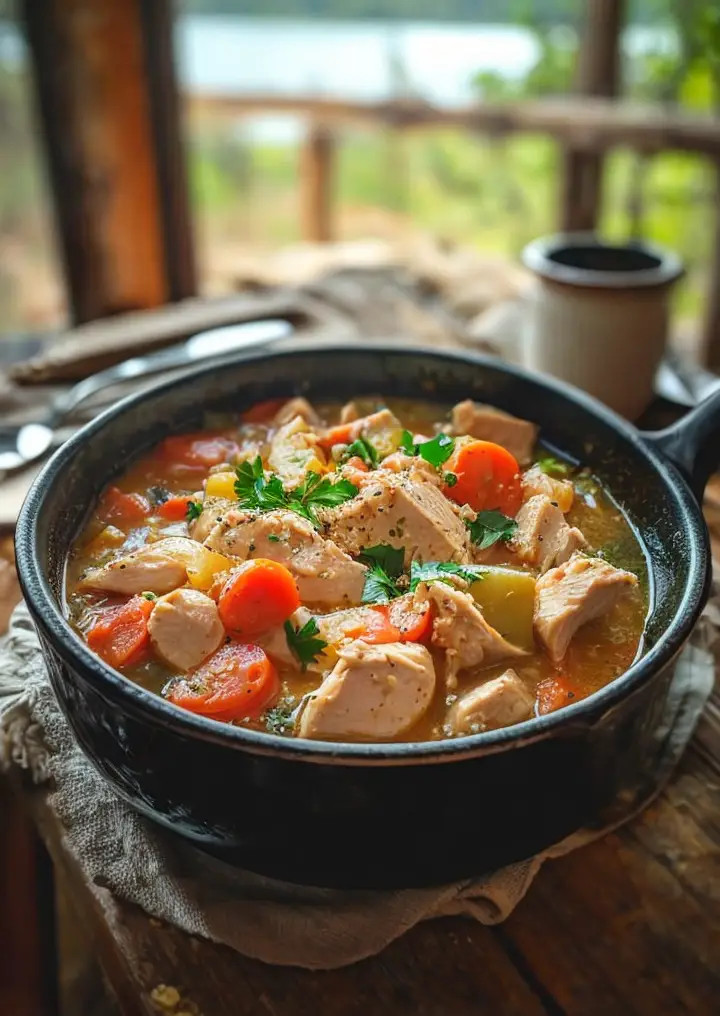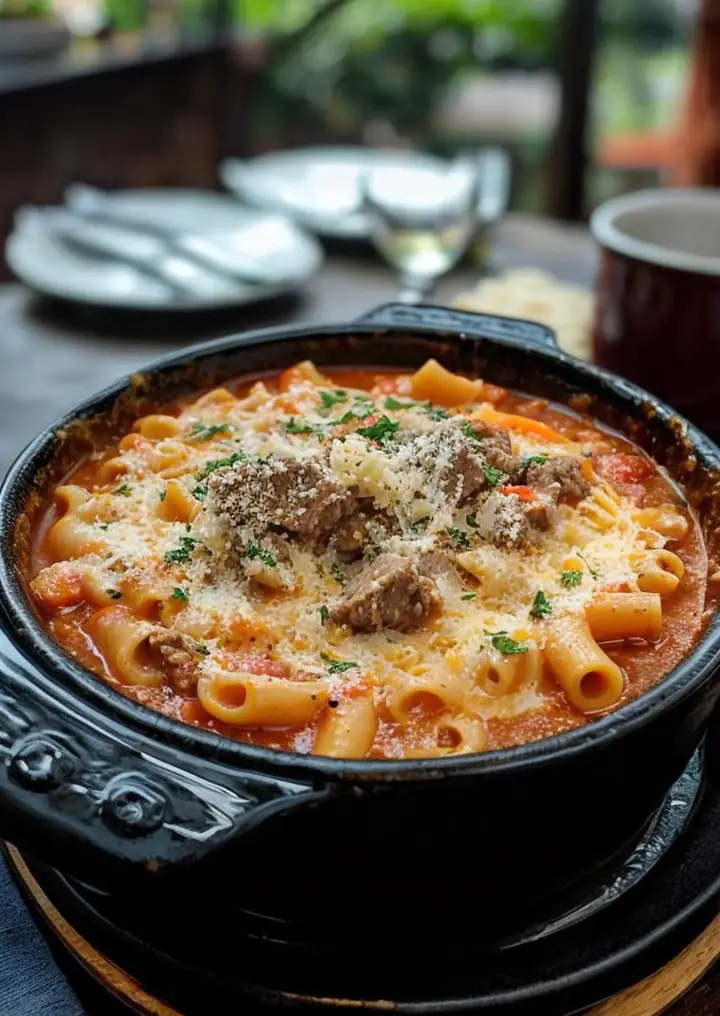Baked Breakfast Potatoes: A Hearty Morning Delight
Baked Breakfast Potatoes are a wonderful way to start your day with a warm and hearty meal. These potatoes are seasoned to perfection, giving you a crunchy exterior that gives way to a fluffy and tender inside. Whether you’re serving them with eggs, bacon, or simply drizzling them with hot sauce, they offer a burst of flavor that tantalizes your taste buds. Ideal for weekend brunches or busy weekday mornings, this dish is both comforting and satisfying.
Imagine walking into your kitchen as the aroma of roasted potatoes fills the air, mingling with hints of garlic and fresh herbs. As you take your first bite, the flavors explode in your mouth, leaving you craving more. The simplicity of baked potatoes is enhanced by their versatility, making them a blank canvas for your favorite toppings. Whether you like them spicy, cheesy, or loaded with veggies, Baked Breakfast Potatoes can be modified to fit your cravings.
Quick Recipe Highlights
- Flavor Profile: These Baked Breakfast Potatoes offer a delightful mix of savory herb flavors, complemented by the natural smokiness from roasting.
- Texture: The contrast between the crispy exterior and the fluffy interior creates a satisfying mouthfeel that will leave you wanting more.
- Aroma: The enticing aroma of garlic, onion, and herbs wafting through your kitchen will make your mouth water.
- Visual Appeal: A medley of golden-brown potatoes garnished with green herbs makes for a visually appealing dish, inviting you to dig in.
- Skill Level Needed: This recipe is beginner-friendly, requiring basic prep skills and easy-to-follow cooking instructions.
- Special Equipment: Only a baking sheet or dish is needed, making this an accessible recipe even for novice cooks.
Recipe Overview
- Difficulty Level: Baked Breakfast Potatoes are easy to prepare, perfect for cooks of any skill level. The straightforward method ensures delicious results every time.
- Category: This versatile dish fits perfectly into breakfast, brunch, or as a side for lunch and dinner, making it a staple meal option.
- Cuisine: While rooted in classic home cooking, baked potatoes can take inspiration from various cuisines, incorporating spices and toppings from around the world.
- Cost: Inexpensive and readily available ingredients make this recipe budget-friendly, perfect for families or anyone looking to save.
- Season: While perfect any time of year, the best seasons for making Baked Breakfast Potatoes are fall and winter when comfort foods are most desired.
- Occasion: Serve these potatoes at casual family gatherings, festive brunches, or even as a simple weeknight dinner side dish.
Why You’ll Love This Recipe
Baked Breakfast Potatoes are beloved not just for their delightful taste and texture, but for their ability to serve as a comfort food you can savor. The crispy exterior creates a contrast with the soft, fluffy middle, awakening your senses and providing a satisfying bite. Topped with fresh herbs or spicy salsa, every forkful is a culinary experience filled with bold flavors.
Convenience is another reason to love this dish. With only 15 minutes of prep time and minimal hands-on cooking, you can whip up a satisfying breakfast without much effort. Toss the potatoes in the oven, and while they bake, you can prepare the rest of your breakfast or relax with a cup of coffee. This makes it perfect for busy mornings or leisurely weekends.
From a nutritional standpoint, potatoes are a rich source of vitamins and minerals, including vitamin C and potassium. Baking them rather than frying keeps the calorie count low while preserving their nutrient content. You can enjoy a delicious meal without the guilt, making them a great addition to a balanced diet.
Socially, Baked Breakfast Potatoes shine as an excellent dish for sharing. Perfect for brunch gatherings, they can be served family-style, allowing guests to customize their plates with assorted toppings. This turns your meal into a fun, interactive experience that brings everyone together over a shared love of good food.
Lastly, these baked potatoes stand out for their accessibility and cost-effectiveness. With simple ingredients that you likely already have in your pantry, you can create a filling meal without breaking the bank. It’s a recipe that supports not only your taste buds but your budget as well, proving that comfort food doesn’t have to be fancy or expensive.
Historical Background and Cultural Significance
Baked potatoes have a long and storied history, dating back to ancient civilizations that first cultivated and embraced this versatile tuber. Originally originating from the Andes region of Peru and Bolivia, the potato gradually made its way to Europe in the 16th century, where it became a staple in various cuisines. Its adaptability to different cooking techniques, including baking, boiling, and frying, secured its place in household kitchens around the globe.
Culturally, baked potatoes symbolize comfort and sustenance, especially in colder climates. In many cultures, they are considered a staple food due to their affordability and nutritional value, providing necessary energy for hard-working families. In the United Kingdom, baked potatoes are often enjoyed with various toppings, showcasing regional flavors and preferences, which enrich their culinary significance.
Over the years, the evolution of the baked potato recipe has seen countless variations. From the simple Russian “jacket potatoes” filled with cheese and butter to the loaded American baked potato topped with chili, cheese, and sour cream, these adaptations reflect the local ingredients and creative ingenuity of different cultures. Each version tells a story and conveys the flavors of its region, keeping the core of the dish alive.
Today, baked potatoes are enjoyed worldwide in numerous forms, from fast-food establishments to gourmet restaurants, highlighting their enduring appeal. Whether served as a side dish or the main attraction, they continue to adapt to the tastes of modern diners, celebrating both tradition and innovation in the culinary landscape.
Ingredient Deep Dive
- Potatoes: A staple food worldwide, potatoes have rich historical significance. Nutritionally, they provide complex carbohydrates, fiber, and essential vitamins. When selecting potatoes, look for firm ones free from blemishes, and store them in a cool, dark place. They can be substituted with sweet potatoes for a different flavor or nutritional profile.
- Olive Oil: A key ingredient that adds flavor and aids in crisping the potatoes, olive oil is rich in healthy fats and antioxidants. Opt for extra virgin olive oil for the best taste and quality. It should be stored in a cool, dark place to preserve its freshness. For a unique twist, substitute with avocado oil or melted coconut oil.
- Seasonings (Salt, Pepper, Garlic Powder): Essential for elevating the flavor of your baked potatoes, these seasonings bring out the natural taste of the potatoes. Garlic powder provides a hint of savory flavor, enriching the dish. Always choose high-quality sea salt for seasoning. Store these in airtight containers to keep them fresh, and feel free to experiment with other herbs and spices.
- Fresh Herbs (Optional): Fresh herbs such as rosemary and parsley add a vibrant flavor and visual appeal. They are packed with nutrients and can enhance the dish’s aroma. When selecting herbs, look for bright, green leaves without browning edges. For storage, keep them in a glass of water in the fridge. Alternatively, dried herbs can be used, though they won’t provide the same freshness.
Common Mistakes to Avoid
- Not Preheating the Oven: Preheating is essential for achieving that crispy texture. If the oven isn’t hot enough, the potatoes will steam instead of roast.
- Using the Wrong Potato Variety: Not all potatoes are created equal! Starchy potatoes like Russets are ideal for baking, while waxy types may not yield the same texture.
- Skipping the Seasoning: Don’t overlook the importance of seasoning! Properly salting your potatoes enhances their natural flavor dramatically.
- Cutting Potatoes Too Small: If you cut them too small, they may cook unevenly or dry out before they are done. Aim for 1 inch pieces for even cooking.
- Overcrowding the Baking Sheet: Give your potatoes space on the sheet to ensure they roast evenly. Too many potatoes can lead to steaming instead of roasting.
- Not Drying the Potatoes: Make sure to pat the potatoes dry before oiling and seasoning them. Excess moisture prevents them from becoming crispy.
- Using Old Oil: Ensure your olive oil is fresh and within its expiration date; old oil can produce undesirable flavors and results.
- Not Checking for Doneness: Always test your potatoes with a fork for doneness. They should be tender inside when fully cooked.
- Ignoring Cooling Times: Allow your baked potatoes to cool slightly after baking before serving. This helps preserve heat and improve flavor.
- Neglecting to Rotate the Pan: Rotating the baking sheet halfway through cooking ensures even browning and prevents uneven cooking.
Essential Techniques
Selecting the Right Potatoes: Choosing the right potato variety is crucial for achieving the desired texture and flavor in your Baked Breakfast Potatoes. Russets are the best option for their starchy quality, which lends a fluffy center upon baking. Always select firm potatoes free from blemishes for the best results.
Prepping Your Potatoes: Properly washing and drying your potatoes is essential for a crispy skin. After washing, thoroughly dry them with a kitchen towel before coating them with oil and seasonings. This step helps avoid steaming and contributes to a deliciously crisp exterior.
Seasoning Evenly: When seasoning your potatoes, mix oil and spices in a bowl before tossing the potatoes in. This ensures an even coating, which leads to consistently flavored potatoes throughout. Make sure you cover every surface for optimal flavor.
Roasting for the Perfect Texture: Baking at a high temperature is key to achieving that perfect crispy texture. Roasting typically should be around 425°F (220°C). Experiment with various times to master the perfect bake for your preference.
Oven Management: Be mindful of your oven’s hot spots. If it runs hotter or cooler in specific areas, rotate your baking tray to ensure equal cooking. Using an oven thermometer helps get an accurate temperature reading to perfect your method.
Pro Tips for Perfect Baked Breakfast Potatoes
1. Prioritize uniform potato sizes for even cooking to enhance texture and flavor throughout.
2. Allow the potatoes to rest after baking to retain heat and maintain optimal texture.
3. Consider adding a sprinkle of cheese or bacon for a delicious twist on your classic recipe.
4. Experiment with various seasonings, including smoked paprika or chili powder, to elevate your flavor profile.
5. For a nice presentation, garnish your baked potatoes with chopped fresh herbs before serving.
6. Use a convection oven if available; this helps achieve a crispier result due to better air circulation.
7. Pre-cook the potatoes in the microwave for a few minutes to reduce baking time if you are short on time.
8. Line your baking tray with parchment paper for easier cleanup and a non-stick surface.
Variations and Adaptations
*Regional variations:* Across various cultures, baked potatoes are adapted in diverse ways, from the classic British jacket potato to Mexican-style stuffed potatoes with beans, cheese, and salsa, showcasing local flavors. Each variation invites exploration of different toppings to suit regional palates.
*Seasonal adaptations:* As seasons change, feel free to incorporate seasonal vegetables or toppings into your baked potatoes. In fall, add roasted pumpkins or squash; in summer, top with fresh tomatoes and herbs for a vibrant look and taste.
*Dietary modifications:* For specific dietary needs, consider making the dish vegan by omitting dairy toppings, or opt for low-carb variations by using cauliflower instead of potatoes.
*Flavor variations:* Enhance the flavor of your baked potatoes with herbs and spices. Try rosemary, thyme, or Italian seasoning for an aromatic twist. Cheese lovers can integrate different cheeses for a rich melty taste.
*Texture modifications:* If you crave a creamier bite, experiment with mashing some of the baked potatoes and adding butter or sour cream for richness, while keeping some whole for variety.
*Presentation alternatives:* Amp up your presentation by serving baked potatoes on a platter, garnished with edible flowers, or in individual bowls for a more rustic feel.
Serving and Presentation Guide
When serving Baked Breakfast Potatoes, consider plating techniques that highlight their texture and vibrant colors. Stack the potatoes in a pyramid shape on a shallow dish, or line them up in individual serving bowls. Garnish with fresh herbs like parsley or chives for a pop of color.
A sprinkle of cheese just before serving can add a lovely melty touch, while dollops of sour cream or salsa can complement their flavor beautifully. Consider traditional accompaniments like crispy bacon or fried eggs for added satisfaction.
To ensure an enjoyable experience, serve the potatoes hot right out of the oven. For those who enjoy a bit of heat, offer hot sauce or chili flakes on the side, allowing guests to customize their flavors. It’s always good to provide portion control options, whether serving family-style or in individual portions to accommodate different appetites.
Wine and Beverage Pairing
Pairing wine with Baked Breakfast Potatoes can enhance your dining experience. For a classic pairing, opt for a Chardonnay; its creamy texture complements the starchy nature of the potatoes elegantly.
For non-alcoholic alternatives, a refreshing iced herbal tea or homemade lemonade can balance the savory notes of the dish nicely. If breakfast is served early, a robust coffee or chai tea option can be ideal to enjoy alongside.
Also, consider pairing with light sparkling wines such as Prosecco, which can elevate the brunch experience. Make sure to serve beverages chilled, enhancing the overall enjoyment of the meal.
Storage and Shelf Life
Proper storage is key to maintaining the quality of your Baked Breakfast Potatoes. Store leftovers in an airtight container in the refrigerator, where they can last for 3-5 days. Ensure that they cool completely before placing them in the container to preserve freshness.
For longer-term storage, consider freezing baked potatoes. Allow them to cool, then place them in freezer-safe bags with as much air removed as possible. When reheating, they can safely stay in the freezer for up to three months.
When reheating, consider using an oven or toaster oven to preserve the texture; a microwave may result in a soggy exterior. To check for spoilage, inspect for any off-smells or discoloration, which indicates they’re no longer fresh.
Make Ahead Strategies
To save time on busy mornings, consider prepping Baked Breakfast Potatoes the night before. Wash and slice the potatoes, coating them with oil and seasonings, and store them in the refrigerator. This allows the flavors to meld overnight and can drastically reduce cooking time in the morning.
If time permits, you can also bake the potatoes ahead of time and then reheat them in the oven just before serving. Allow for assembly of any toppings you plan to use to be prepped as well.
When storing between steps, ensure that your prepped potatoes are tightly wrapped or sealed to avoid oxidation. Adding fresh elements like chopped herbs right before serving will enhance flavor and freshness upon serving.
Scaling Instructions
When scaling your Baked Breakfast Potatoes, consider the quantity of ingredients for halving or doubling the recipe. Adjust cooking times as necessary; smaller batches may cook faster while larger batches could require a bit longer.
For doubling or tripling, be mindful of the size of your baking sheet to ensure even cooking. You may need to bake in batches if your oven cannot accommodate the entire quantity at once.
The technique and process remain the same, but ensure that you monitor the potatoes during baking, as timing may vary with quantity adjustments. Adjust seasoning amounts accordingly to maintain flavor consistency across larger servings.
Nutritional Deep Dive
In exploring the nutritional content of Baked Breakfast Potatoes, a standard serving offers a balanced macro breakdown, yielding significant carbohydrates for energy. Potatoes are a source of essential vitamins like vitamin C, B6, and potassium.
On a micronutrient level, they boost fiber content which aids in digestion and promotes fullness, making them a great option for maintaining a healthy weight. Consider portion size, especially if aiming for a weight-management goal, to maintain balance in your overall diet.
Baked Breakfast Potatoes offer a low-calorie, high-nutrient meal when prepared with minimal added fats and wholesome toppings, presenting an excellent choice for anyone looking to enjoy filling and nutritious foods in their diet.
Dietary Adaptations
*Gluten-free:* Baked Breakfast Potatoes are naturally gluten-free, making them an excellent option for anyone with gluten sensitivities or celiac disease. Serve them with gluten-free toppings for added flavor.
*Dairy-free:* Omit cheese and butter or substitute with plant-based alternatives like nutritional yeast for a cheesy flavor without the dairy. Creamy avocado can also be used for a rich topping.
*Vegan:* Whole baked potatoes are inherently vegan. Utilize a range of vegetables and plant-based toppings to enhance the meal, providing a healthy, cruelty-free option.
*Low-carb and Keto-friendly:* For a low-carb variation, substitute traditional potatoes with cauliflower, preparing them in the same way for a satisfying dish that fits a keto diet.
*Paleo and Whole30 options:* Stay true to paleo diets by using only primary ingredients without processed additives. Opt for fresh herbs or spices to add flavor while remaining compliant.
*Low-FODMAP:* For those on a low-FODMAP diet, potatoes can be enjoyed in moderation. Pair them with suitable low-FODMAP toppings like olive oil and hard cheeses to enhance flavor without triggering discomfort.
Troubleshooting Guide
If your Baked Breakfast Potatoes turn out mushy, it’s often due to overcrowding on the baking sheet or not drying them completely before seasoning. Ensure they have space and are patted dry for best results.
In cases where potatoes are undercooked, increase baking time and check periodically until they’re tender. For uneven cooking, use a baking sheet that promotes air circulation and evenly distribute potatoes.
Flavors that seem bland may require a sprinkle of salt or a dash of your favorite seasoning to elevate the dish. Always taste for adjustments during the cooking process.
If your potatoes are overly crispy or burnt, reduce the cooking temperature and keep an eye on them as they bake for optimal results. Baking times can vary based on sizes and oven calibration, so adjustments can make a big difference.
If you struggle with cooking timing due to multiple dishes, utilize timers for various cooking stages, aiding in precise management of your meal prep.
Recipe Success Stories
Community feedback surrounding Baked Breakfast Potatoes often highlights their versatility and ease of preparation. Many readers share stories about how they’ve customized their recipes, utilizing seasonal ingredients or unique toppings that reflect their personal tastes.
Cooks have reported fantastic results by incorporating their favorite spices, creating variations that cater to their family preferences. One reader noted their success with adding a kick by infusing spicy herbs, turning the dish into a family favorite.
Adaptation stories abound, with some utilizing leftovers creatively, transforming baked potatoes into hash, shepherd’s pie, or breakfast burritos, showcasing how these hearty spuds can serve more than one purpose.
For those documenting their culinary journey, tips on photography and plating emphasize the importance of presentation. Crisp, golden-brown skins combined with colorful toppings create a visually appealing dish that’s perfect for sharing on social media.
In sharing variations and personal success, a community of recipe enthusiasts continues to inspire creativity in making Baked Breakfast Potatoes a beloved staple in kitchens everywhere.
Frequently Asked Questions
How can I make my baked potatoes fluffier?
To achieve fluffier baked potatoes, ensure that you select starchy varieties like Russets, as they yield a lighter texture. Additionally, don’t skip the step of drying the potatoes thoroughly before coating them with oil, as this helps to enhance fluffiness during baking.
Can I prepare Baked Breakfast Potatoes in advance?
Absolutely! You can prep the potatoes and store them in the refrigerator for a few hours before baking. Alternatively, you can bake them ahead of time and reheat them just before serving, ensuring they remain delicious.
What toppings work best for Baked Breakfast Potatoes?
The possibilities are endless! Popular toppings include sour cream, chives, cheese, bacon bits, jalapeños, and fresh vegetables. Try customizing based on personal tastes or seasonal ingredients.
Why are my baked potatoes soggy?
Soggy baked potatoes typically result from excess moisture before baking or overcrowding the baking sheet. To avoid this, make sure to dry your potatoes thoroughly and space them apart on the tray.
How can I achieve crispy skin on my baked potatoes?
Crispy skin can be achieved by coating the potatoes evenly with oil and seasoning, along with ensuring the oven is preheated, and baking at a high temperature for optimal texture and crispiness.
Can I use sweet potatoes instead of regular potatoes?
Yes! Sweet potatoes can be used as a substitute. They will provide a slightly different flavor profile and cook time, but will yield similar satisfying results. Keep in mind they may require slightly less baking time.
How do I know when my potatoes are done?
Your potatoes are done when they are tender inside and can easily be pierced with a fork or knife. If they require further cooking, return them to the oven and check frequently.
Is it safe to eat leftover baked potatoes?
Yes, as long as they are stored properly in an airtight container in the fridge. Consume leftovers within 3-5 days for optimal safety and freshness.
Can I make Baked Breakfast Potatoes gluten-free?
Yes, Baked Breakfast Potatoes are naturally gluten-free. Ensure that any additional toppings or seasonings used are also gluten-free to maintain compliance with dietary restrictions.
I don’t have olive oil; what can I use instead?
If you don’t have olive oil, vegetable, canola, or avocado oil can be great substitutes. Each adds a different flavor, so feel free to experiment to discover your favorites.
Additional Resources
If you’re looking for more delicious recipes, be sure to check out our collection of side dishes, breakfast options, and hearty casseroles. Whether you’re interested in exploring new culinary techniques or ingredient information, these resources provide tools for enhancing your cooking skills.
For those who love experimenting with ingredients, our ingredient spotlights delve into nutritional benefits and versatile uses, helping elevate your regular cooking to new levels.
Don’t miss our recommended kitchen gadgets and tools for efficient meal preparation. Investing in the right equipment can make a world of difference in achieving successful, satisfying outcomes in your culinary ventures.
Join the Conversation
We’d love to hear about your experiences and variations with Baked Breakfast Potatoes! Share your cooking photos and tag us on social media using #[YourHashtag]. Join our community by leaving feedback and suggestions, and explore the countless adaptations you’ve developed.
Engage with fellow food lovers in discussions about recipe variations, share personal insights on preparation tips, and contribute stories about your culinary adventures. Whether you’re a seasoned chef or a novice, your voice adds flavor to our cooking community.
The Recipe
Baked Breakfast Potatoes
Serves: 4
Prep Time: 15 mins
Cook Time: 45 mins
Total Time: 60 mins
Kitchen Equipment Needed
- Baking sheet
- Parchment paper (optional)
- Mixing bowl
- Knife
- Cutting board
Ingredients
- 4 medium-sized russet potatoes
- 3 tablespoons olive oil
- 1 teaspoon salt
- 1 teaspoon black pepper
- 1 teaspoon garlic powder
- Optional: Fresh herbs (rosemary, parsley)
Directions
- Preheat the oven to 425°F (220°C).
- Wash and dry the potatoes thoroughly. Cut into evenly-sized cubes.
- Toss the potato cubes in a mixing bowl with olive oil, salt, pepper, and garlic powder until fully coated.
- Spread the potatoes on a baking sheet in a single layer.
- Bake for 40-45 minutes, or until golden and crispy, stirring halfway through.
- Optional: Garnish with fresh herbs before serving for added flavor and presentation.
Recipe Notes
- Feel free to adjust seasonings according to your taste preferences.
- For extra flavor, try adding grated cheese in the last 5 minutes of baking.
- Consider experimenting with different potato varieties for unique textures and flavors.




